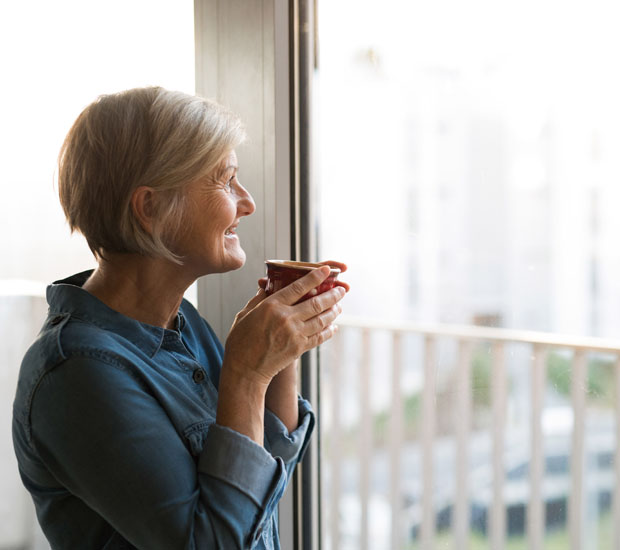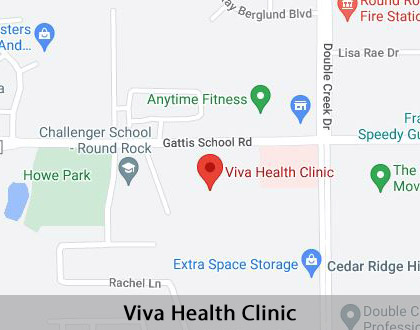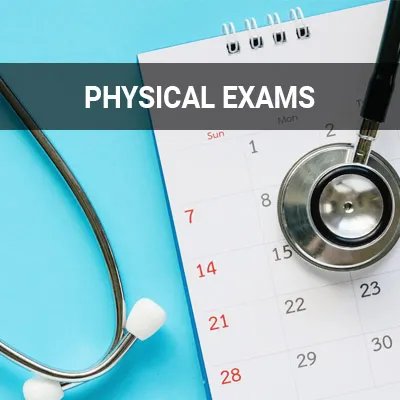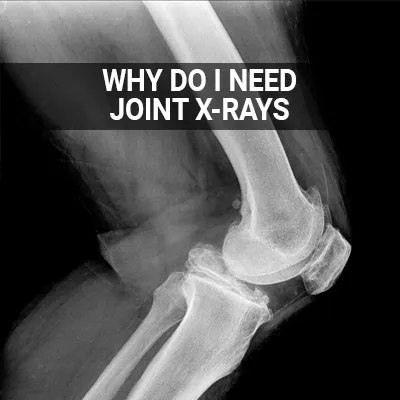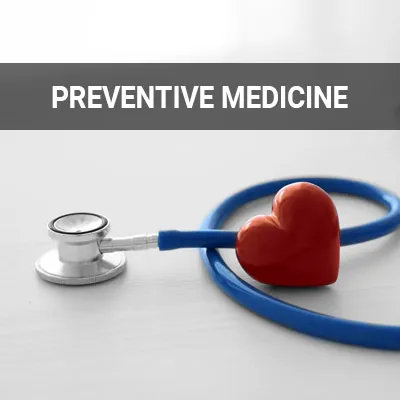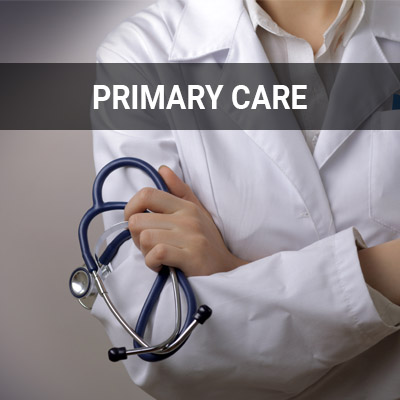Preventing Falls in the Home Round Rock, TX
Falls are one of the most common injuries people suffer from in the home. Regardless of whether the home is a comfortable or hazardous space, families and loved ones should understand the preventative measures they can use to protect themselves from falling and sustaining an injury.
Although some individuals may be more prone or susceptible to falls, fall-proofing the home is advantageous to everyone in the household. Viva Health Clinic in Round Rock offer treatments and services for patients after a fall. We can also provide caretakers and loved ones with information to help prevent or limit falls through fall-proofing the home.
Susceptibility to Falls
While everyone is prone to falling, certain individuals may be more susceptible. The World Health Organization (WHO) found that high risk is most related to an individual's age, gender, and health.
Age: Older people are at the highest risk for injury due to physical, sensory, and cognitive changes associated with aging and living environments not suitable for the elderly. Children are second at risk as evolving developmental stages, innate curiosity in their surroundings, and increasing levels of independence put them in a vulnerable position for falls.
Gender: Men may be more likely to suffer fatal falls, while women are more susceptible to non-fatal falls with severe injuries. This may be due to higher levels of risk-taking behaviors and hazards within occupations.
Health/Occupation: Individuals who are inactive or whose health status is poor are more likely to suffer from injuries due to falls. Occupations, including those with elevated heights and hazardous working environments, are cause for many injuries due to falling.
Regardless of an individual's age, gender, health, and occupation, risk factors can affect anyone. Prevention is key to keeping the body safe and eliminating the risk of more serious injuries and conditions from developing due to a fall.
“The World Health Organization (WHO) found that high risk is most related to the age, gender, and health of an individual.”
Safe Home Measures
There are a variety of ways that individuals can take care of themselves and prevent falls in the home. It is highly recommended that elderly individuals live in one-story homes in order to avoid stairs altogether. If that is not possible, home improvements, such as grab bars and handrails, should be made to reduce the risk of falling, as stairs can cause some of the most severe injuries.
Another change in the home can be replacing old, worn, or hazardous furniture, especially chairs. Those more susceptible to falling, such as children and the elderly, should also have chairs that are low and suitable to their height. It is recommended that those at risk of falling move around carefully in the home, even when they have become accustomed to it.
Other home improvements include changing the lighting, decluttering, and reorganizing the bedroom and bathroom.
“It is highly recommended that elderly individuals live in one-story homes in order to avoid stairs altogether.”
Importance of Lighting
Lighting is one of the most crucial components in creating a safe home and preventing falls. Inadequate lighting can cause many accidents as hazardous materials, and misplaced furniture can often go unseen. The Mayo Clinic suggests:
- Placing night lights in bedrooms, bathrooms, and hallways
- Placing a lamp within reach of the bed for middle-of-the-night needs
- Making clear paths to light switches that are not near room entrances
- Trading traditional switches for glow-in-the-dark or illuminated switches
- Turning on the lights before going up or downstairs
- Storing flashlights in easy-to-find places in case of power outages
“Inadequate lighting can cause many accidents as hazardous materials and misplaced furniture can often go unseen.”
Check out what others are saying about our primary care practitioner services on Yelp: Preventing Falls in the Home in Round Rock, TX
Keeping the Home Clean
Cleanliness and organization are key to keeping hazardous materials out of the way and reducing the risk of falling. According to the National Institute on Aging, six out of every 10 falls happen at home as we generally feel more comfortable in our homes and do not think much about safety. Fall-proofing the home means decluttering and keeping areas clean at all times.
The floors should always remain both clean and empty. Remove books, paper, clothes, shoes, toys, and all other items from the floor. Small rugs and throws are not recommended as they get easily caught and often move with the feet. Rugs and carpet should be firmly attached to the ground using double-faced tape, tacks, or a slip-resistant backing. Replace or fix loose carpet and floorboards right away, and keep hardwood floors clean at all times by wiping away spills immediately.
“According to the National Institute on Aging, six out of every 10 falls happen at home as we generally feel more comfortable in our homes and do not think much about safety.”
Questions Answered on This Page
Q. Who is more susceptible to falls?
Q. What are some measures for a safe home?
Q. How can lighting help prevent falls in the home?
Q. How can keeping the home clean prevent falls?
Q. How can I make the bedroom and bathroom safe?
People Also Ask
Bed and Bath Safety
Bedrooms and bathrooms are common areas that can cause falls in the home. It is important to keep the bedroom free of loose items and furniture and ensure there is adequate lighting. Nightstands should be kept close to a wall and away from the side of the bed to make getting up safer and easier.
Bathrooms are the most injury-prone areas of the house as floors and surfaces tend to be wet and cause slipping. It is important to use only non-slip mats for both the floor and in the shower. It is a good idea to place grab bars by the toilet and in the shower to make sitting down and standing up.
“It is important to use only non-slip mats for both the floor and in the shower.”
Frequently Asked Questions About Preventing Falls
Q. What is the first thing I should do if a loved one falls?
A. When someone falls, it is important to immediately check if they are okay. If they can speak, ask questions to ensure they understand and hear well. Check their head and body for any visible injuries, and ask them where it is hurting. It is a good idea to call for medical help in most cases.
Q. What can I do to help protect myself and loved ones at home?
A. If there are individuals in the household that are more susceptible to falling, it is recommended to fall-proof the home. The CDC provides a home fall prevention checklist of the various ways in which people can fall-proof their home and understand the many hazards found at home.
Q. What is the worst type of fall?
A. Falls typically have three tiers: basic, non-fatal, and fatal. Basic falls are everyday falls that may cause no injury at all, or may produce a small injury that can be treated like a minor head injury. Non-fatal falls are injury-induced falls that did not cause death but likely caused tremendous pain and injury, such as a broken hip. Fatal falls are falls that result in death, such as falling off of a ledge or cliff. The worst falls are injury-induced and fatal falls.
Q. What are ways in which individuals can prevent falls outside of the home?
A. Those who are concerned for themselves or a loved one should always voice their concerns with their practitioner. They will ask specific questions to understand your situation and can provide you with information and referrals as needed. It is a good idea to get an eye check-up as well and make home improvements as your provider sees fit.
Q. How can I improve my home to prevent frequent falling?
A. The most crucial aspects of fall-proofing the home are lighting, accessibility, and cleanliness. Ensure the home is well-lit and has light switches next to all sitting areas (bed, couch, desk). We also encourage setting up grab bars and handrails on the stairway and by the toilets and shower, as well as any other place of frequent use. Lastly, clean the house regularly and make sure there are no loose items or rugs on the floor.
Start Feeling Better – Visit Us Today
By visiting us as soon as possible, our team can help get you the professional treatment you need. Instead of waiting around and allowing the symptoms to get worse, we can provide you with treatment options.
Definition of Medical Terminology
Call Us Today
Fall-proofing is a sure way to prevent many falls and injuries from occurring. Call us today at call 512-243-5872 to schedule an appointment or to learn more about how we can help.
Helpful Related Links
- American Journal of Medicine. American Journal of Medicine. 2023
- American Medical Association (AMA). American Medical Association (AMA). 2023
- American Trauma Society. American Trauma Society. 2023
- Health and Human Services Prevention & Wellness. Health and Human Services Prevention & Wellness. 2023
- National Council on Aging. National Council on Aging. 2023
About our business and website security
- Viva Health Clinic was established in 2023.
- We accept the following payment methods: American Express, Cash, Discover, MasterCard, and Visa
- We serve patients from the following counties: Williamson, Travis, McLennan
- We serve patients from the following cities: Pflugerville, Austin, Kyle, Waco, Leander, Cedar Park, Bastrop, Round Rock, Georgetown, Hutto, Liberty Hill, and Taylor
- National Provider Identifier Database (1104428416). View NPI Registry Information
- Norton Safe Web. View Details
- Trend Micro Site Safety Center. View Details
Back to top of Preventing Falls in the Home
